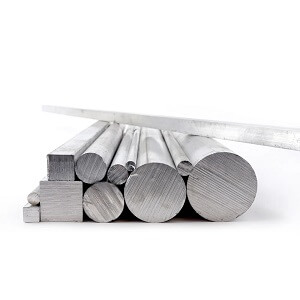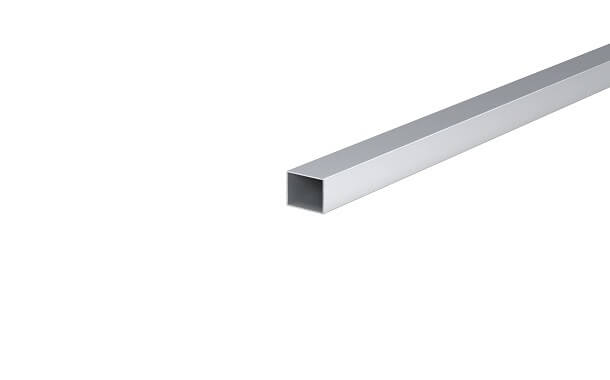How Much Does Aluminum Cost?
If you use aluminum for work or have some scrap to sell, then some big questions are likely: How much does the aluminum cost? What drives prices up or down? Are there ways to spend less on aluminum? This article breaks it all down.
How Much Does Aluminum Cost Per Pound?
In 2020, one pound of aluminum sold for an average of around 89 cents on the market. Knowing current aluminum rates helps anyone using the metal get decent deals – whether you’re a scrapper, contractor, or manufacturer.
Currently, the cost of aluminum is around $0.25 to $0.30 per pound for non-ferrous aluminum, while Aluminum scrap is between $0.96 and $1.04 per pound. Aluminum metal spot prices, on the other hand, are around $1.03 per pound in Nov, 2023.
Daily Metal Spot Price reports that aluminum prices for Nov 2023 are between $1.0287 and $1.0374.
Investing.com also lists live Aluminum prices but by the ton this time, with an average of $2,213.65 per ton.
Markets Insider notes that the price of aluminum is $2,213.65 per ton.
Trading Economics offers an Aluminum price forecast expecting it to trade at 2217.05 USD/Tonne by the end of this quarter.
SMM – Metal Market says that SMM A00 Aluminum Ingot is $2,626.48 per mt.
| Historical Data | Price Data at End of September (USD/lb) |
|---|---|
| 2023 | $0.99 |
| 2022 | $1.01 |
| 2021 | $1.29 |
| 2020 | $0.79 |
| 2019 | $0.80 |
Instead of focusing on day-to-day price shifts, look at longer price trends. This gives better insight into when aluminum prices hit yearly highs versus lows. Then you can make decisions about buying, selling, or using your aluminum for maximum value.
What Factors Impact Aluminum Costs?
Several main factors impact how much aluminum costs per pound at any given time:
Supply & Demand – When more aluminum products hit the market due to manufacturing boosts or recycling drives, supply goes up as demand is met. So prices tend to drop. When supply tightens but product orders roll in, demand outpaces supply, and aluminum costs per pound climb higher much of the time. Economic swings also impact metal markets, slowing supply chains when economies contract and accelerating them when markets expand.
You might also like our articles about the cost of pyrite, metal fabrication, or metal detectors.
Electricity Prices – It takes vast amounts of electricity to extract aluminum from raw materials and form it into products. By one estimate, power accounts for 30-45% of total aluminum production costs! So when electricity rates rise or fall, aluminum market prices follow along much of the time.
Transportation Expenses – Shipping bulk aluminum stock and products eats up a share of overall metal production and sale costs as well. So fluctuating fuel prices that lift transportation expenses tend to nudge aluminum market rates higher too.
Tariffs & Trade Policies – Where aluminum comes from and where it goes impacts costs as well. Various tariffs, taxes, incentives, and trade arrangements between metal-producing countries and metal-importing countries create changes in supply chains that influence aluminum pricing over time.
Are There Other Aluminum Buyer Costs To Consider?
Beyond straight material price per pound, companies and contractors that use a lot of aluminum factor in some additional costs like:
Inventory Expenses – Storing large amounts of aluminum stock and finished product often means leasing warehouse space. And that piles on overhead costs. What’s more, financing large aluminum inventories ties up operating capital that could be invested elsewhere if supply chains moved faster.
Risk Management Costs – Aluminum pricing often fluctuates wildly month-to-month based on the factors mentioned earlier. This can mean profit windfalls or budget busts for companies dependent on aluminum. So many protect themselves by purchasing financial risk management products to lock in aluminum costs over future months and years. But those products come with fees and premiums that add to operating expenses.
How Can You Get the Lowest Aluminum Prices?
 Here are tips to lock in better aluminum pricing whether you’re a recycler or purchaser:
Here are tips to lock in better aluminum pricing whether you’re a recycler or purchaser:
Sell scrap directly to processing plants – You’ll often get far higher returns than taking aluminum cans to local recycling centers which pay out a fraction of the true commodity resale price.
Negotiate long-term supply contracts – Agree to consistent bulk purchases from metals producers monthly or annually to avoid pricing whiplash.
Buy aluminum futures – Expect to use large volumes of aluminum over the next year or more for manufacturing or construction? Then aluminum futures contracts can let you lock in fixed aluminum costs over future months at rates often far lower than spot prices.
Invest in aluminum when market fundamentals suggest price drops ahead – Sometimes rising electricity rates or slowing auto sales signal aluminum costs drop around the bend as supply will soon outpace demand. Savvy investors can profit by buying up physical aluminum or trading aluminum futures in these scenarios.
Talk to Industry Insiders – Key aluminum buyers, sellers, traders, and recyclers often pick up early price trend signals from upstream supply chain chatter and downstream client usage shifts before headline consumer prices swing. Tap their expertise to get ahead of market moves.
Final words
There’s a whole host of factors that ultimately impact how much you’ll pay or pocket for aluminum at any moment in time. Getting insight into the right leading signals can help aluminum buyers, sellers, and recyclers ride the waves instead of getting swamped when sudden commodity market shifts swell or storm.



Leave a Reply
Want to join the discussion?Feel free to contribute!